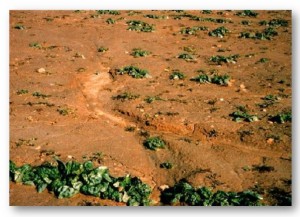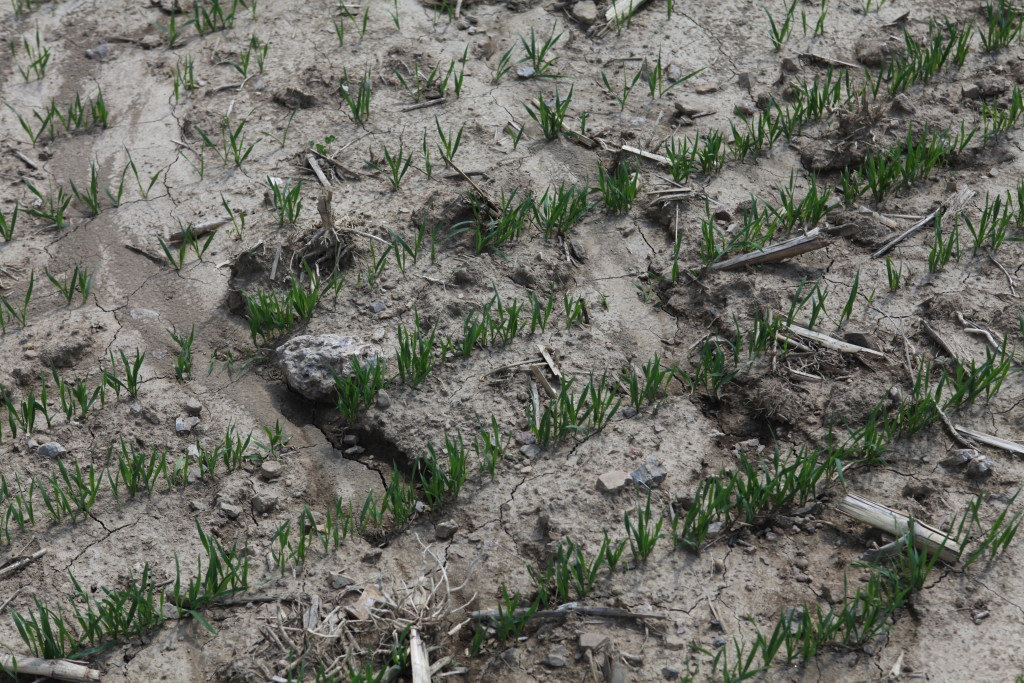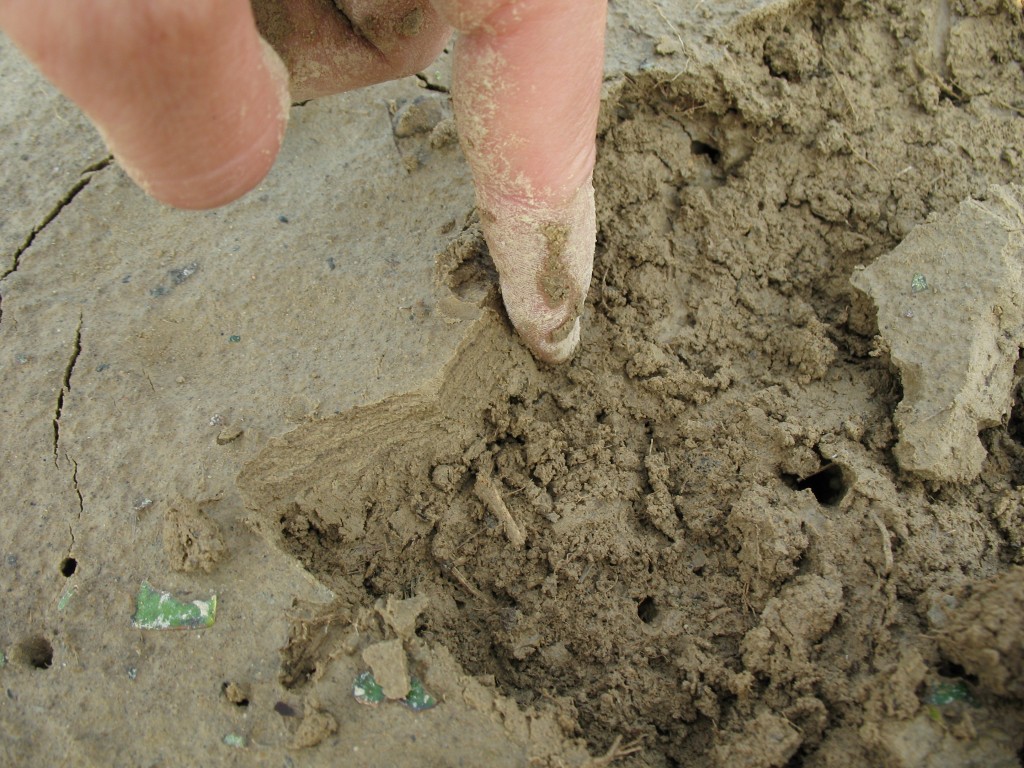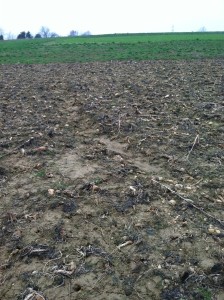Bare, tilled soil is most susceptible to erosion.

A single rain storm can lead to the loss of tons of topsoil. The loss of a crop is a bummer. The loss of topsoil is far worse.
Wind and water are powerful forces that can rapidly remove valuable topsoil. Cover crops can protect soil from the impacts of wind and water. No-till agriculture, which leaves residue on the surface and doesn’t destroy soil aggregates with tillage, can also protect from erosion.
One good rule to remember is that if you can see erosion in the field, it is probably occurring at an unsustainable level. Soil is slowly made from the parent material (bedrock below, for example), but this rate of soil production can only keep up with very small soil losses. The rate of “sustainable” soil loss for most soils is equal to approximately 3-5 tons of soil per year, which may sound like a lot, but amounts to about half the thickness of a dime.

Soil erosion can take out cover crops or cash crops when they are small.
Soil movement/erosion within a field can lead to other limiting conditions for plant growth. For instance, the soil deposited from one area of the field onto another can lead to crusting and poor aeration later.

A poorly aggregated silt loam soil after a major rain storm on Maryland’s Eastern Shore. Nearly an inch of deposited soil overlays the slightly better structured soil below. Tillage can quickly harm a soil’s aggregate stability and make it susceptible to erosion. Photo credit: Natalie Lounsbury
Maintaining soil cover, living plant roots, and limiting soil disturbance are the best ways to limit erosion. Some cover crops, like grasses, can increase a soil’s aggregate stability through their fibrous root systems, root exudates, and microbial glues, like glomalin, that they encourage.

On this sloped land, forage radish did not prevent “unsustainable” levels of soil erosion.
On sloped and erodible land, low-residue cover crops like forage radish reduce erosion compared to a bare soil, but we have observed “unsustainable” levels of erosion after a forage radish cover crop nonetheless (left). A cover crop mixture is one way to get the benefits of multiple cover crops, and on steep land, a high-residue cover crop to prevent erosion should be included in the cover crop mixture.
For further reading on cover crop effects on soil erosion, read this article from the Soil and Water Conservation Society.
Continue Exploring the Cover Crop Web of Functionality




